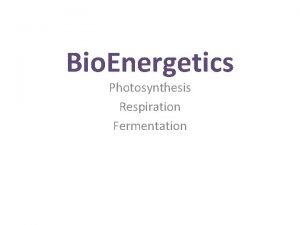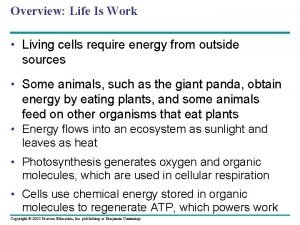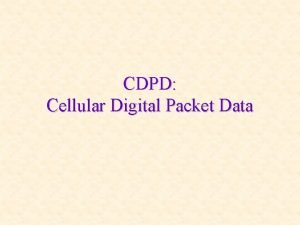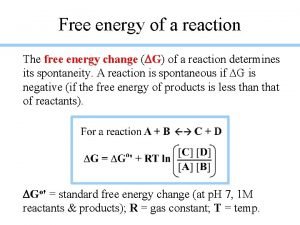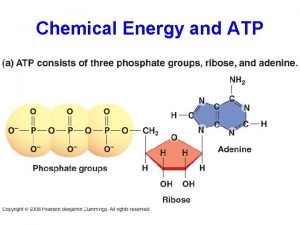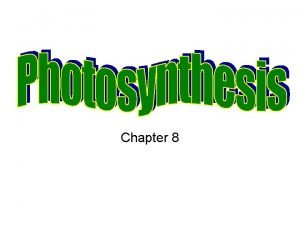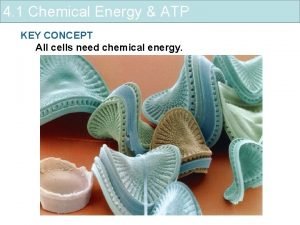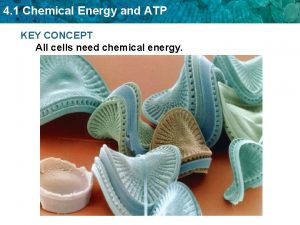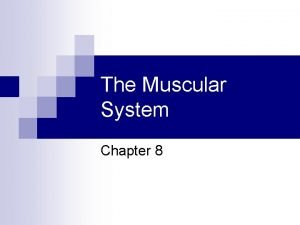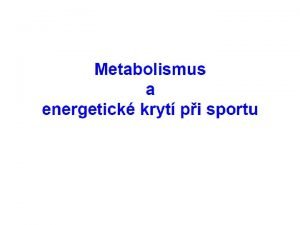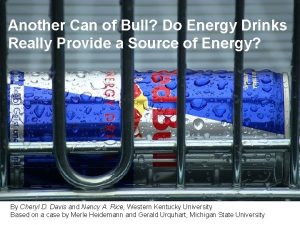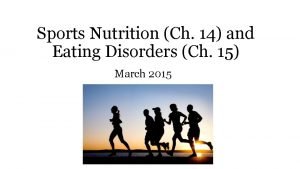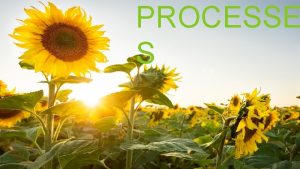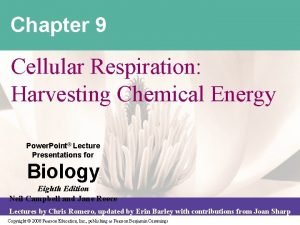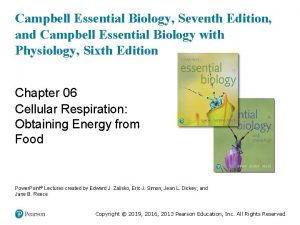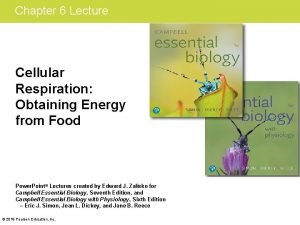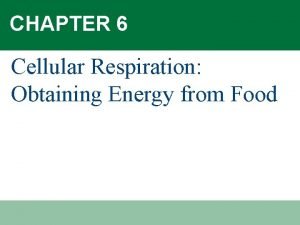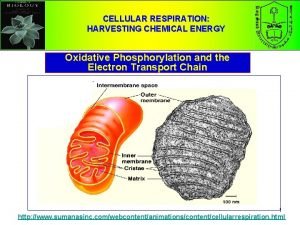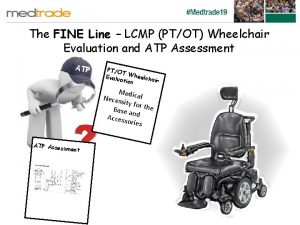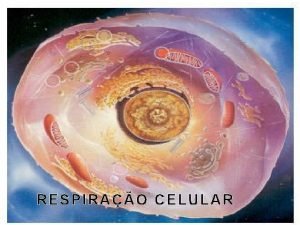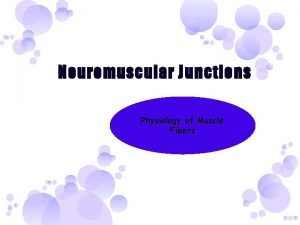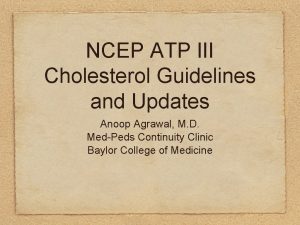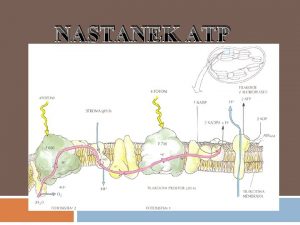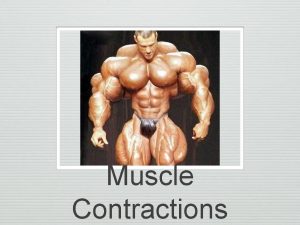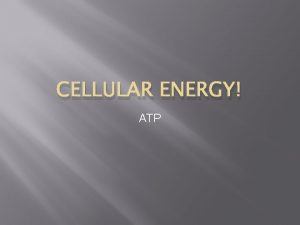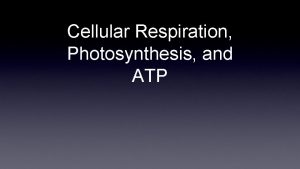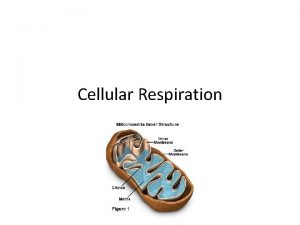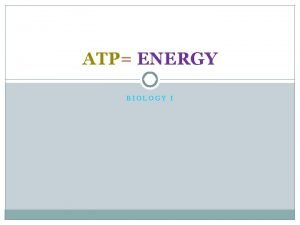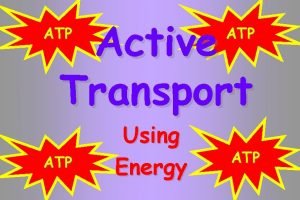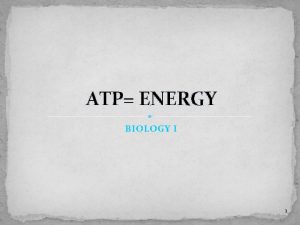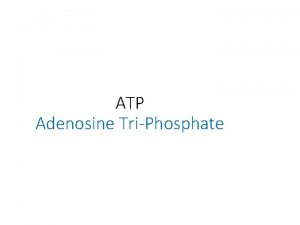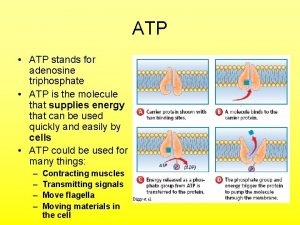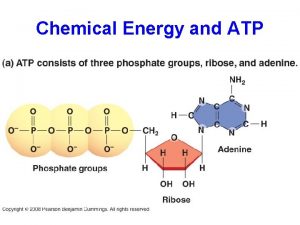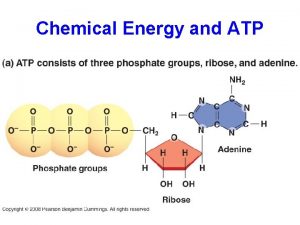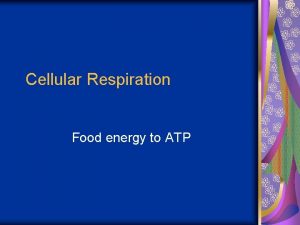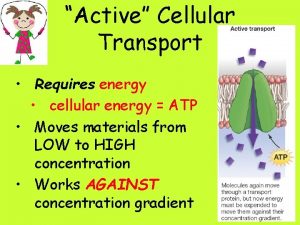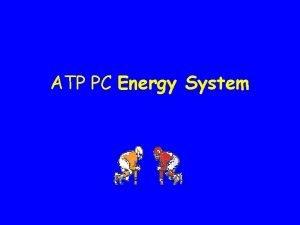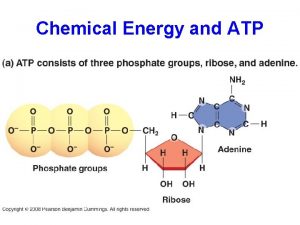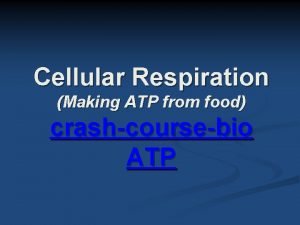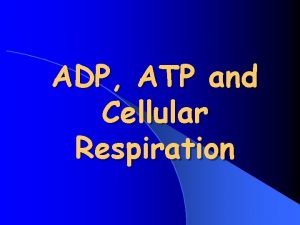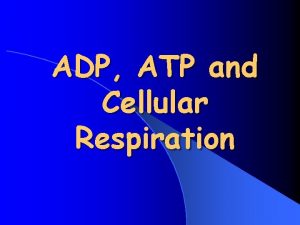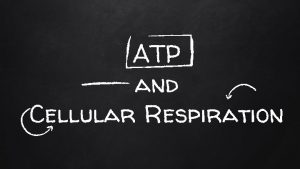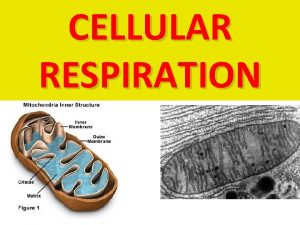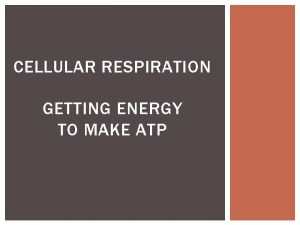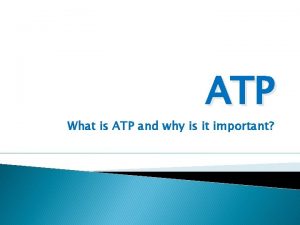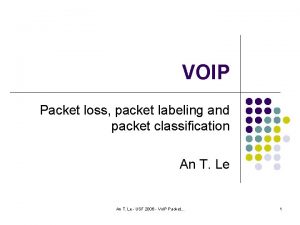Packet 6 Cellular Energy ATP cellular energy Why





































- Slides: 37

Packet 6 Cellular Energy

ATP: cellular energy

Why do cells need energy? • Cells carry out three kinds of energy-requiring work: – Chemical – Mechanical – Transport

Making ATP: Aerobic cellular respiration

Glycolysis (Stage 1) • Breaking down glucose – “glyco – lysis” (splitting sugar) glucose pyruvate 2 x 3 C 6 C – Occurs in the cytoplasm – A little ATP energy is harvested, – but it’s inefficient • generate only 2 ATP for every 1 glucose

Overview 10 reactions – convert glucose (6 C) to 2 pyruvate (3 C) – produces: 4 ATP & 2 NADH – consumes: 2 ATP – net yield: 2 ATP & 2 NADH Substrate-level phosphorylation

Products of glycolysis move on to stage 2 or 3

Mitochondria — Structure • Double membrane – – – smooth outer membrane highly folded inner membrane intermembrane space Matrix DNA, ribosomes enzymes outer intermembrane inner space membrane cristae matrix mitochondrial DNA

Stage 2: Pyruvate grooming and the Kreb’s Cycle This happens twice for each glucose molecule that started glycolysis…wh y?

Cellular respiration

Electron Transport Chain and Chemiosmosis: ATP payoff! • Electron Transport Chain – series of proteins built into inner mitochondrial membrane

Remember the Electron Carriers? Glycolysis 2 NADH Time to break open the piggybank! Krebs cycle 8 NADH 2 FADH 2

Electron Transport Chain What powers the proton (H+) pumps? … Electronegativity!

Chemiosmosis and oxidative phosphorylation

Cellular respiration 2 ATP + ~3 8 A 34 ATP TP

Summary of cellular respiration C 6 H 12 O 6 + 6 O 2 • • 6 CO 2 + 6 H 2 O +~34 -38 ATP Where did the glucose come from? Where did the O 2 come from? Where did the CO 2 go? Where did the H 2 O come from? Where did the ATP come from? What is recycled for use again? Why do we breathe?

Taking it beyond… • What is the final electron acceptor in Electron Transport Chain? O 2 § So what happens if O 2 unavailable? § ETC backs up nothing to pull electrons down chain u NADH & FADH 2 can’t unload H u § ATP production ceases § cells run out of energy

Anaerobic respiration Making ATP without oxygen

• • All cells carry out glycolysis: prokaryotes and eukaryotes. Eukaryotes and many prokaryotes also carry out oxidative phosphorylation (remember this requires oxygen). How can some bacteria carry out aerobic respiration if they don't have mitochondria? FUN FACT: many bacteria have ETC’s in their cell membranes.

Reminders! A net of 2 ATP is generated in glycolysis. NAD+ must be present available for this process. New considerations For aerobic organisms this is not a problem, NAD+ is regenerated by the ETC. Not all organisms can use oxygen, they are anaerobic Anaerobic organisms use glycolysis only to make ATP They regenerate , NAD+ through fermentation processes

Alcohol fermentation

Lactic acid fermentation

Review: Answer all of the following questions in your notebook. • What are the products of pyruvate grooming for 1 molecule of glucose? • What are the products of the citric acid cycle for 1 molecule of glucose? • After glycolysis, pyruvate grooming, and the citric acid cycle, what are your net products? • What is phosphorylation? • What is substrate-level phosphorylation? • What is the main goal for stages 1 -3?

Review: Answer all of the following questions in your notebook • What is the summary equation for cellular respiration? • If oxidation is a loss of electrons (in the form of hydrogen atoms) and reduction is the gain of electrons (in the form of hydrogen atoms), – what is oxidized during cellular respiration? – what is reduced during cellular respiration? • How does glucose get to your cells for cellular respiration? • What is the point of cellular respiration? • What are the net molecular products of glycolysis?

Where does glucose come from for cellular respiration? Photosynthesis!

Photosynthesis

Leaf structure Mesophyll cells Stomate Guard cells Vascular tissue

Chloroplast structure Grana Thylakoid Stroma Double membrane

Stage 1: Lightdependent reactions Light energy is converted to chemical energy (as NADPH and ATP). Stage 2: Calvin cycle Glucose is made from CO 2 and hydrogens carried by NADPH using ATP energy.







Calvin cycle

SUMMARY What factors might affect the rate of photosynthetic reactions?
 Pictures
Pictures Equation for photosynthesis
Equation for photosynthesis Difference between an autotroph and a heterotroph
Difference between an autotroph and a heterotroph Total atp produced in cellular respiration
Total atp produced in cellular respiration Overview of cellular respiration
Overview of cellular respiration Cdpd
Cdpd Chapter 8 section 1 how organisms obtain energy answer key
Chapter 8 section 1 how organisms obtain energy answer key Atp hydrolysis and free energy change
Atp hydrolysis and free energy change Atp energy
Atp energy How does atp release energy
How does atp release energy What type of energy is stored in atp
What type of energy is stored in atp Is atp chemical energy
Is atp chemical energy Forearm muscle group
Forearm muscle group Atp cp energy system
Atp cp energy system Atp energy drink ad assignment
Atp energy drink ad assignment Bulimia definition
Bulimia definition Dont ask
Dont ask Definition of fermentation
Definition of fermentation Why is cellular respiration important
Why is cellular respiration important Chapter 8 section 2: photosynthesis
Chapter 8 section 2: photosynthesis Chapter 9 cellular respiration harvesting chemical energy
Chapter 9 cellular respiration harvesting chemical energy Inputs of glycolysis
Inputs of glycolysis Chemical cycling in an ecosystem
Chemical cycling in an ecosystem Explain how amp stimulates cellular respiration
Explain how amp stimulates cellular respiration Chapter 9: cellular respiration: harvesting chemical energy
Chapter 9: cellular respiration: harvesting chemical energy Cellular respiration obtaining energy from food
Cellular respiration obtaining energy from food Cellular respiration obtaining energy from food
Cellular respiration obtaining energy from food Phosphorelation
Phosphorelation Energy energy transfer and general energy analysis
Energy energy transfer and general energy analysis Energy energy transfer and general energy analysis
Energy energy transfer and general energy analysis Atp wheelchair evaluation
Atp wheelchair evaluation Fermentação lática
Fermentação lática Juniper srx 4200
Juniper srx 4200 Sarcoplasmic reticulum
Sarcoplasmic reticulum Ncep-atp iii
Ncep-atp iii Nastanek atp
Nastanek atp Atp and muscle contraction
Atp and muscle contraction Classement atp
Classement atp


